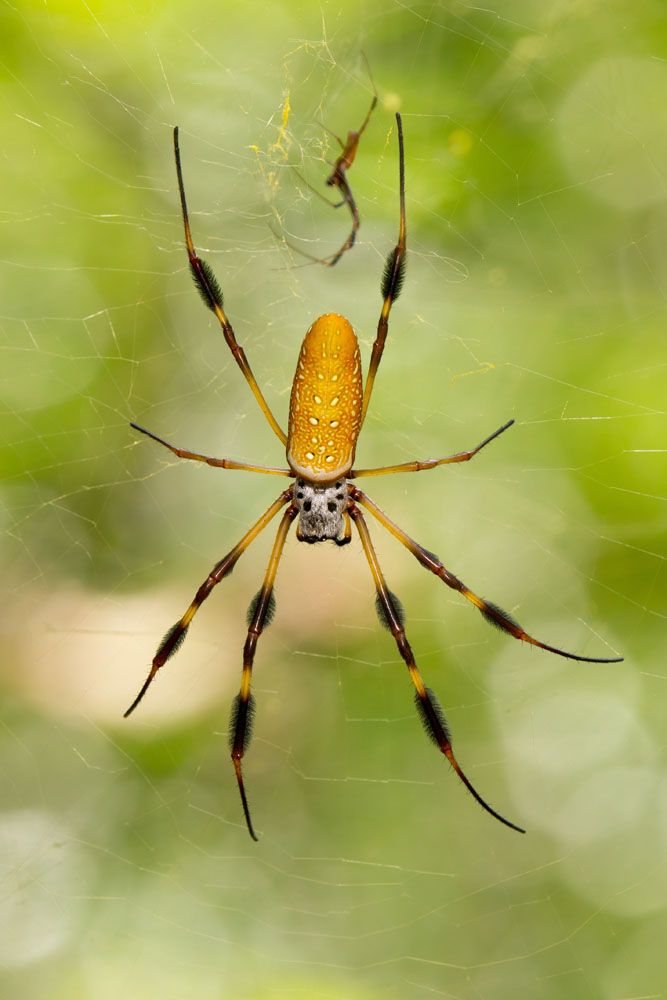
Golden Silk Spider – Nephila clavipes
Golden Silk Spider
Scientific Name: Nephila clavipes
Common Name: Golden silk spider, Golden silk orb-weaver, Banana spider
Appearance: Females golden silk spiders are much longer than males ranging from 24mm to 40mm. The abdomen of females has a bright color which changes as the spider matures. The legs are brown with orange bands and covered with hairbrushes. On the other hand, males are 3 to 4 times smaller than females and are dark brown.
Host Plants or Food: They feed on grasshoppers, flies, beetles, locusts, wood moths. They use webs constructed by them for trapping the prey.
Territory: Southeastern US, Central America, South America, Gulf States, Southeast Asia
Mode of Damage: They do not damage or feed on plants. Instead, they eat grasshoppers, beetles, and other insects; hence they are considered beneficial garden insects.
Habits and Life History:
Golden silk spiders are primarily present in high humidity and open spaces, like forests, and mainly present in July to September,
A significant problem faced by the Golden silk spider is overheating, but the cylindrical body and silvery carapace reflect sunlight; hence they are adopted to the environment.
The maximum life cycle of Nephila clavipes is one year, and they live longer in a tropical environment. The females lay eggs from October to November,
The eggs are oval to cone-shaped, covered with a white powdery substance, joined together but separated when hatching is near. Each egg is wrapped in yellow silk, making a cocoon.
The eggs develop inside a sac-like structure egg-sac; egg-sac protects the egg till they hatch into spiderlings.
Spiderlings undergo many changes to develop into adults.
